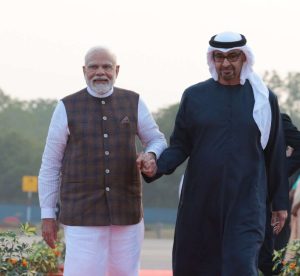Connecting with offline consumers: The trends and tactics Middle Eastern businesses should consider for successful marketing campaigns…writes Karam Malhotra
In today’s evolving technology-first world, the connected consumer effectively lives on digital platforms, surrounded by connectivity devices and active on real-time communication tools. While connected consumers may range from young digital natives to full-time working professionals and their interests and demands vary – commonalities in their behaviors are also apparent. Mobile devices have propelled them into a new dimension, one where they could be reading on their phones during transit or checking product reviews when face-to-face with store sales representatives. Without question, connectivity is a constant state of being, applicable to many millions of people. However, what’s equally true is that another segment has, to date, remained traditional: the offline consumer.

Regional offline consumer outlook
This applies to the Middle East, where there remain markets where connectivity is not seamlessly acquirable. Although approximately 280 million people across the region were connected to mobile internet by the end of 2020 , a further 350 million were still without mobile internet connections – emphasizing the scale of offline consumers even today, as well as the varying level of digital maturity across the region.
With these scenarios in mind, two questions have arisen from a brand standpoint: Firstly, are they looking beyond connected consumers? Secondly, how can they connect with potential offline consumers? While 70 percent of Middle Eastern organizations will have accelerated digital technologies adoption to transform their business processes and outreach capabilities by 2022 , many will still be challenged to successfully reach those who do not fall into the connected consumer category. Although surprising to some, certain communities will continue residing in areas where reliable and uninterrupted connectivity issues persist, with content consumed in native languages.
Fortunately, mobile represents an opportunistic gateway for brands to engage with this target audience, especially considering the challenges COVID-19 has posed. As of January 2021, the Middle East had witnessed a sizeable increase in mobile device activations with 23 percent year-over-year growth and e-commerce sales are expected to reach USD 48.6 billion by 2022 – a USD 21.7 billion increase from 2018 . The mobile phone is a constant companion for the Middle Eastern consumer wherever they are – at home, work, or social gatherings – and many brand marketers are proactively considering new ways to circulate mobile content in communities that lack internet access via offline marketing.
In simple terms, offline marketing is reaching out to audiences without connectivity access by leveraging the power of mobile. Various content sharing and discovery platforms enable users to share files and content even when offline, while in-app advertising can also drive huge volumes of downloads – yielding successful offline marketing results.
Key marketing considerations for businesses
As businesses look ahead and chart a course for interacting with offline audiences, they should be aware of the latest trends and consider the marketing technologies that will be most beneficial to them. Firstly, it is apparent that the pandemic has changed the content consumption playbook for brands. Traditional cable or satellite service cancellations have led to a decrease in TV viewership, with consumers no longer watching TV ads or visiting stores to purchase products. Instead, an omnichannel mobile-oriented shopping experience has taken effect. The Middle East has witnessed exponential growth in over-the-top (OTT) videos and related services in recent times, and this momentum will continue through 2024 as OTT platform subscriptions continue rising.
ALSO READ: High digitalization among women-owned businesses
Consumers, although advertently, also have declining attention spans, which businesses should view as an opportunity rather than a challenge. Short format videos lead to better engagement with consumers, and these should be pursued as a form of engagement with the offline consumer. Furthermore, while there are popular marketing technology tools that businesses use to efficiently drive campaigns, such as Google Analytics and Salesforce, it is worth highlighting a different approach for increasing user numbers from an application standpoint. Partnering with peer-to-peer (P2P) apps that target offline audiences, have an established user base, and boast notable expertise in app marketing can help drive quality downloads for one’s business and solidify successful engagement with offline audiences.
For Middle Eastern businesses, the coming period represents an opportunity to reach out to offline consumers and acquire new customers through the power of mobile. Irrespective of limited internet access, mobile activation, payment, and subscription rates will continue increasing in the years ahead, broadening potential and possibilities. By pursuing OTT services, marketing technologies, and platform partnerships, businesses can interact with offline consumers like never before and build mutually beneficial relationships for the long term.






